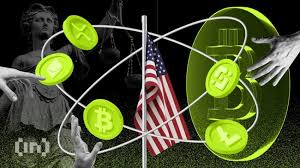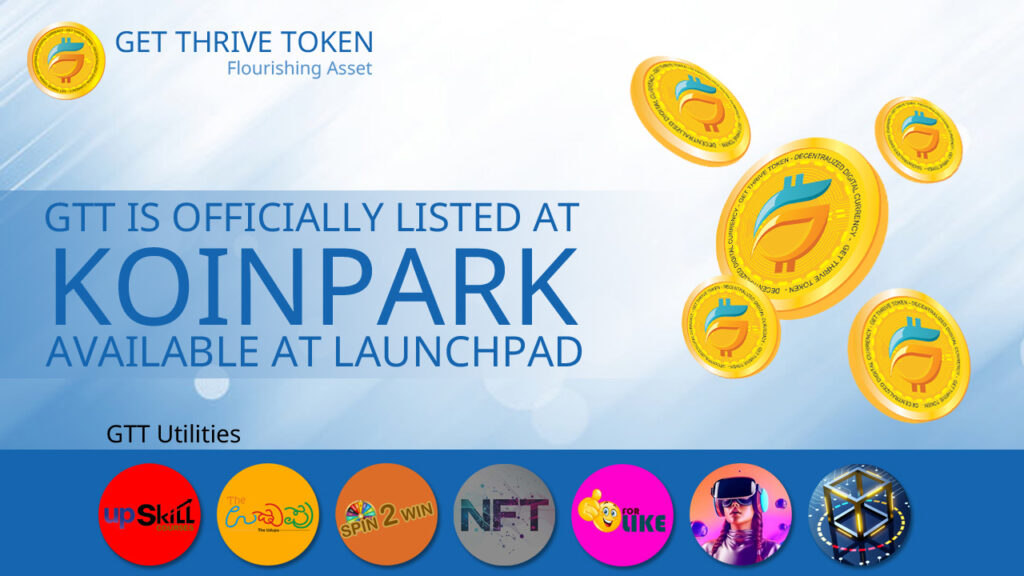The financial world has long been dominated by traditional banking institutions and centralized financial services. However, the rise of Decentralized Finance (DeFi) is challenging this status quo by creating an open, permissionless, and decentralized alternative to conventional financial systems. Powered by blockchain technology, DeFi enables individuals to access financial services such as lending, borrowing, trading, and insurance, without relying on banks or other intermediaries.
In this blog, we’ll dive into what DeFi is, how it works, and how it’s revolutionizing the financial landscape. We’ll also examine the opportunities, challenges, and risks associated with this emerging sector and explore how it could shape the future of finance.
What is Decentralized Finance (DeFi)?
Decentralized Finance (DeFi) refers to a set of financial products and services built on blockchain technology, particularly Ethereum. Unlike traditional finance, which relies on intermediaries such as banks, brokers, and insurance companies, DeFi operates on a decentralized network of computers, known as nodes, that work together to validate and execute transactions.
At its core, DeFi is about removing intermediaries from the financial system, allowing users to transact directly with each other using smart contracts—self-executing contracts with the terms of the agreement written into code. These contracts are deployed on a blockchain, ensuring transparency, security, and immutability.
Some key characteristics of DeFi include:
- Decentralization: No single entity controls the system. Instead, it is governed by a decentralized network of nodes or smart contracts.
- Transparency: All transactions are recorded on the blockchain, providing full transparency to users.
- Open Access: Anyone with an internet connection can access DeFi platforms, making financial services available to the unbanked and underbanked populations.
- Smart Contracts: DeFi platforms operate using smart contracts that automatically execute transactions based on predefined conditions, eliminating the need for intermediaries.
Key Components of DeFi
DeFi encompasses a wide range of financial services, and its ecosystem includes several key components that work together to provide decentralized financial solutions:
- Decentralized Exchanges (DEXs)
Decentralized exchanges, or DEXs, are platforms that allow users to trade cryptocurrencies and other digital assets without relying on a centralized authority. Unlike traditional exchanges, such as Coinbase or Binance, DEXs operate on a peer-to-peer basis, with users maintaining control of their private keys and funds.
Popular DEXs include:
- Uniswap: A decentralized exchange on Ethereum that uses an automated market maker (AMM) model to facilitate token swaps.
- SushiSwap: A decentralized exchange and automated market maker that allows users to trade and provide liquidity to various token pairs.
DEXs have gained popularity because they provide greater privacy, control, and security to users, as they do not require users to deposit funds into a central exchange wallet.
- Lending and Borrowing Platforms
DeFi lending and borrowing platforms allow users to lend their cryptocurrency to others in exchange for interest or borrow digital assets by collateralizing their existing holdings. These platforms eliminate the need for traditional banks or lenders and use smart contracts to manage the lending and borrowing process.
Some popular DeFi lending platforms include:
- Aave: A decentralized lending platform that allows users to earn interest by lending their crypto assets or borrow funds by providing collateral.
- Compound: A DeFi protocol that allows users to supply assets to liquidity pools and earn interest or borrow assets against collateral.
DeFi lending platforms enable individuals to access capital without the need for credit scores or traditional banking relationships, making borrowing and lending more inclusive.
- Stablecoins
Stablecoins are cryptocurrencies designed to maintain a stable value by being pegged to a reserve asset, such as the US dollar or gold. They play a crucial role in DeFi by providing stability and reducing the volatility commonly associated with cryptocurrencies like Bitcoin and Ethereum.
Popular stablecoins used in DeFi include:
- Dai (DAI): A decentralized stablecoin on the Ethereum blockchain that is pegged to the US dollar and is governed by the MakerDAO protocol.
- Tether (USDT): A centralized stablecoin that is widely used in DeFi and other cryptocurrency ecosystems.
Stablecoins are often used in DeFi platforms for lending, borrowing, and trading, as they provide a more stable unit of value compared to highly volatile cryptocurrencies.
- Yield Farming and Liquidity Mining
Yield farming and liquidity mining are methods used by DeFi participants to earn rewards by providing liquidity to decentralized platforms. Yield farming involves users supplying capital to a DeFi protocol (such as a liquidity pool on a DEX) in exchange for interest or governance tokens.
Liquidity mining refers to the process of providing liquidity to a DeFi platform’s liquidity pool and earning rewards, typically in the form of native platform tokens.
Platforms like Yearn Finance and Harvest Finance enable users to maximize their yield farming opportunities by automatically optimizing the best DeFi protocols to earn the highest returns.
The Benefits of DeFi
- Financial Inclusion
One of the most significant advantages of DeFi is its ability to provide financial services to individuals who are unbanked or underbanked. According to the World Bank, approximately 1.7 billion people worldwide do not have access to traditional banking services. DeFi platforms, by operating on the blockchain, are accessible to anyone with an internet connection, making financial inclusion more achievable.
DeFi also removes geographical barriers, allowing people in countries with unstable financial systems or restrictive banking regulations to access global financial markets.
- Transparency and Security
DeFi platforms offer a level of transparency that traditional financial systems cannot match. All transactions are recorded on the blockchain, providing a publicly accessible and immutable ledger. This transparency helps users verify the legitimacy of transactions and contracts, reducing the risk of fraud and manipulation.
Furthermore, since DeFi platforms use smart contracts, the execution of transactions is automated, reducing human error and the need for intermediaries who may be prone to mistakes or misconduct.
- Control and Ownership
In traditional finance, users must trust banks and institutions with their funds. In contrast, DeFi allows individuals to retain control of their assets. By interacting directly with DeFi protocols, users can manage their own funds, without relying on a central authority to hold or access their assets.
DeFi also promotes financial sovereignty by allowing users to participate in a wide range of financial activities, from lending and borrowing to trading and investing, all without needing permission from a centralized institution.
- Innovative Financial Products
DeFi has given rise to numerous innovative financial products that were previously unavailable in traditional finance. These products include synthetic assets (digital representations of real-world assets), decentralized insurance, and prediction markets. The open nature of DeFi allows developers to create and deploy new financial instruments and services that cater to a diverse range of user needs.
Challenges and Risks of DeFi
While DeFi offers many benefits, it is not without its challenges and risks. Some of the key issues include:
- Smart Contract Vulnerabilities
Since DeFi platforms rely on smart contracts, there is the potential for coding errors or security vulnerabilities that could lead to exploits and loss of funds. There have been several high-profile hacks in the DeFi space, including the bZx attack and the Harvest Finance exploit, which resulted in millions of dollars in losses.
- Regulatory Uncertainty
The regulatory landscape for DeFi remains unclear. Governments and financial regulators are still grappling with how to classify and regulate DeFi platforms, which could lead to changes in laws or restrictions that may impact the DeFi ecosystem. Regulatory uncertainty presents a risk for DeFi users and developers, as potential future regulations could affect how DeFi platforms operate.
- Scalability and Network Congestion
Many DeFi platforms operate on the Ethereum blockchain, which is often criticized for its scalability issues. As the demand for DeFi services grows, the Ethereum network can become congested, leading to high gas fees and slower transaction times. This can negatively impact the user experience and limit the accessibility of DeFi services, particularly for smaller participants.
The Future of DeFi
Despite the challenges, the future of DeFi looks promising. The industry continues to evolve, with innovations such as layer-2 scaling solutions (e.g., Optimism and Arbitrum) helping to address network congestion and reduce gas fees. Additionally, new blockchain platforms like Solana and Avalanche are gaining traction as faster, more scalable alternatives to Ethereum.
As DeFi continues to mature, it is likely that we will see greater integration with traditional finance, regulatory clarity, and enhanced security measures. The potential for DeFi to revolutionize finance remains significant, and it will be exciting to watch how the space develops in the coming years.
Decentralized Finance (DeFi) is transforming the financial industry by offering open, accessible, and decentralized alternatives to traditional banking systems. With its ability to provide financial services to underserved populations, increase transparency, and allow individuals to retain control over their assets, DeFi is poised to disrupt the traditional financial ecosystem.
However, DeFi also faces significant challenges, including smart contract vulnerabilities, regulatory uncertainty, and scalability issues. Despite these challenges, the potential of DeFi to revolutionize finance is immense, and its growth will likely continue to accelerate in the coming years.
As the DeFi space evolves, it will be essential for users, developers, and regulators to work together to address these challenges and create a sustainable, secure, and inclusive financial system for the future.




